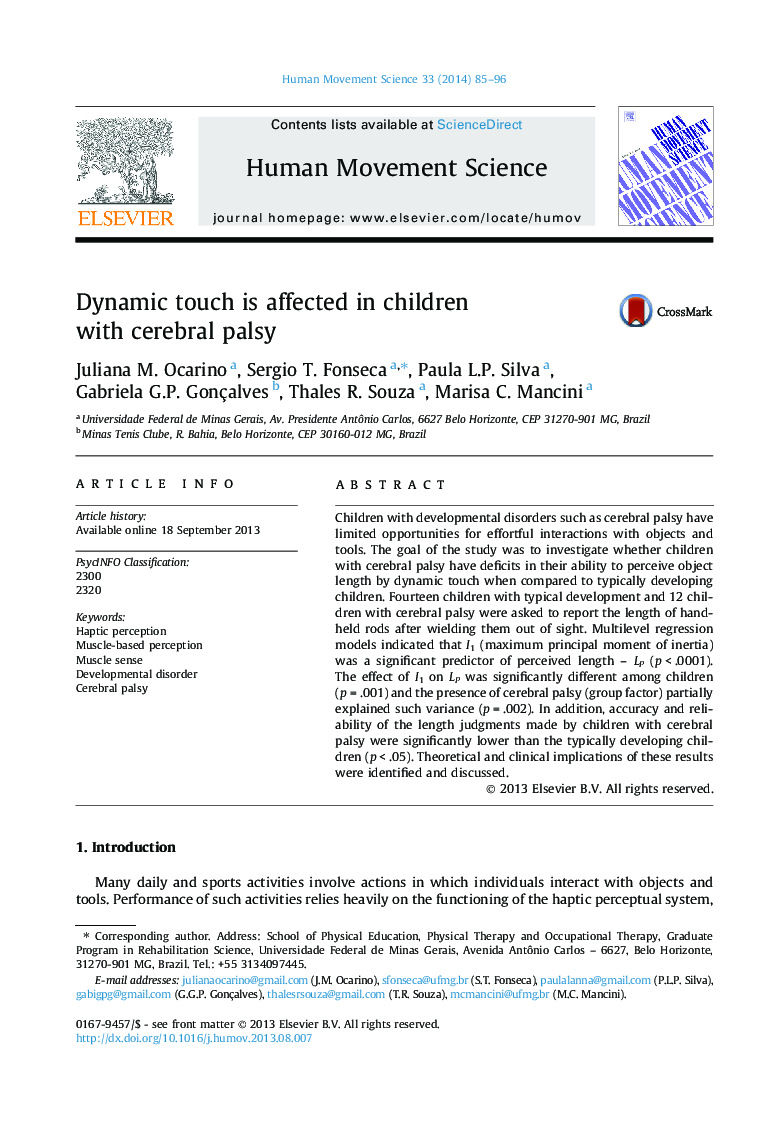| Article ID | Journal | Published Year | Pages | File Type |
|---|---|---|---|---|
| 7292490 | Human Movement Science | 2014 | 12 Pages |
Abstract
Children with developmental disorders such as cerebral palsy have limited opportunities for effortful interactions with objects and tools. The goal of the study was to investigate whether children with cerebral palsy have deficits in their ability to perceive object length by dynamic touch when compared to typically developing children. Fourteen children with typical development and 12 children with cerebral palsy were asked to report the length of hand-held rods after wielding them out of sight. Multilevel regression models indicated that I1 (maximum principal moment of inertia) was a significant predictor of perceived length - LP (p < .0001). The effect of I1 on LP was significantly different among children (p = .001) and the presence of cerebral palsy (group factor) partially explained such variance (p = .002). In addition, accuracy and reliability of the length judgments made by children with cerebral palsy were significantly lower than the typically developing children (p < .05). Theoretical and clinical implications of these results were identified and discussed.
Related Topics
Life Sciences
Neuroscience
Cognitive Neuroscience
Authors
Juliana M. Ocarino, Sergio T. Fonseca, Paula L.P. Silva, Gabriela G.P. Gonçalves, Thales R. Souza, Marisa C. Mancini,
